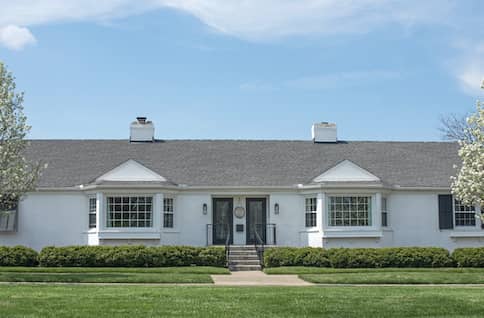If you rent out one or multiple homes, you understand the importance of having the properties occupied so that you have a steady stream of income. This allows you to pay your expenses and hopefully make a profit. However, to make the most of your investment, it’s important to also consider economic occupancy.
In Brief: What To Know About Economic Occupancy
Economic occupancy is a way of comparing expected rental income against actual rental income. An economic occupancy rate above 90% is a sign of solid management, while a rate below 90% indicates opportunities for improvement. For example, the property managers may have too many empty units or be low in their estimates of what the market will bear for rent.
This is an overview of the concept, and we’ll dig into the topic in greater detail for those interested in income-producing real estate in the rest of the article.
It’s also important to realize that this is just one metric to determine success when it comes to real estate investing. While you might be interested in this as a landlord or investor in real estate investment trusts, it’s not something applicable for house flippers.
See What You Qualify For
Buy A Home
Discover mortgage options that fit your unique financial needs.

Refinance
Refinance your mortgage to have more money for what matters.
Tap Into Equity
Use your home’s equity and unlock cash to achieve your goals.
What Is Economic Occupancy?
Economic occupancy can be defined as a ratio comparing the maximum amount you could make if everyone was paying the market rate for your units to the amount you actually make over whatever period of time you’re measuring against. For many, it probably makes most sense to think of this as a monthly calculation.
Real estate investors and property owners can use this as one metric to evaluate the financial effectiveness of their property management practices. Property managers should expect to be measured, at least in part, on economic occupancy. If you’re looking at how to invest in real estate, understanding this concept is fundamental.
Economic Vs. Physical Occupancy: Which Is More Important?
While economic occupancy measures what you could get for rent if all of your units were occupied by tenants paying the current market rate, physical occupancy looks at the ratio of units occupied by tenants to the total number of units you own. Both are expressed as a percentage.
The question of which one is more important may be oversimplified when looking at buying rental property. To begin with, physical occupancy rate is a component of the formula for economic occupancy. So economic vacancy and physical vacancy are interrelated in real estate.
On one hand, if all your tenants are paying the market rate at any given time and you have one vacant unit across all of your properties, your economic occupancy rate is pretty high. However, you might be able to make more money on a gross basis if you find a tenant, but charge them $100 less per month because they’re a veteran. In this case, you create a slightly higher economic vacancy by not taking as much money as you could. However, you still put more money in your pocket.
There are many theories about how to set the appropriate rental amount. For instance, there’s the 1% rule. You could also pay to have an appraisal done so you can get their opinion of the current market rate. Be sure to do research on the prevailing rent for comparables in your area.
Using The Economic Occupancy Formula
The formula for determining economic occupancy is fairly simple, but there are several factors that go into the inputs. Here’s the basic formula:
Rental Income/Gross Potential Rent x 100
Gross potential rent can be defined as the total amount you would make if everyone was paying the market rate. For example, if you had 4 units and market value dictated that you could rent them for $1,000 each, your gross potential rent would be $4,000.
Ideally, the economic occupancy rate would always be 100%. As a practical matter, it’s never going to work that way. Market values change monthly, but most rental leases are negotiated yearly. There is always going to be a mismatch between the gross potential rent and the amount that you collect.
Occasionally, you’ll have units that are vacant. With a big enough operation, you might have a property manager who lives rent-free in the building. Because of this, you may have operating costs on that unit, but you won’t be collecting money on it.
You’ll also have to market your available units. The lower your physical occupancy rate, the greater the negative impact on your economic occupancy rate.
In the example above, while the gross potential rent might be $4,000, among four tenants that you have, only one with a recently negotiated contract is paying the market rate. Because the others have contracts that are older, their negotiated rates mean you’re only making $3,600 monthly. This makes your economic occupancy rate exactly 90%.
The Benchmark For Good Economic Occupancy
This is a bit of a generalization, but if you’re looking for a target by which to measure economic occupancy, it’s not a bad idea to set your goal at 90% or higher. This is true for residential properties in terms of both homes and apartment complexes. The same rate doesn’t apply for commercial real estate.
It’s important to note that this standard doesn’t apply to every rental situation. The occupancy rate for hotels and self-storage units is going to be different from both an economic and physical perspective. Also, there are other factors to consider like how fast you can attract new tenants for vacant units.
You might also prioritize finding new tenants at a discounted rate with incentives if you need the cash flow rather than holding out for the market rate. Finally, the economic occupancy rate you can expect under ideal conditions may vary based on the market. Be sure to do your own research on whether a property currently has a good return on investment (ROI).
What It Means If Economic Occupancy Is Below 90%
If the economic occupancy for your properties is below par for your area, there could be several causes. The easiest explanation is that the market rate may have gone up a lot since the last time your renters negotiated contracts. Your incentive structure could also be the culprit. For instance, you could be giving long time tenants a break that’s cutting into your bottom line.
Vacant units are also a constant battle. While this is particularly true for apartment buildings, it’s also a problem for those renting out single-family residences.
FAQ: Quick Answers About Economic Occupancy
Now that you have a primer on the concept of economic occupancy, here are some answers to a few of the most common questions.
How do you figure out an occupancy percentage?
To figure out an economic occupancy percentage, you divide the amount of rent you collect each month by the gross potential rent you could receive assuming every unit was occupied and paying the market rate. This is multiplied by 100 and expressed as a percentage.
What is the difference between economic vacancy and physical vacancy?
Economic vacancy is about the amount of money you’re leaving on the table by not having all of your units occupied by tenants paying the market rate. Physical vacancy looks at how many units aren’t occupied by tenants at all compared to the total number of units you have.
What is economic occupancy in self-storage?
In the self-storage space, economic occupancy is defined as the total amount of money someone can get for renting out storage units at the market rate as compared to what they’re actually receiving for monthly rent. Although the concept is the same, the benchmark for good return on investment is likely to be different than it would be in the residential space.
The Bottom Line: Economic Occupancy Is A Measure Of Rental Property Success
Economic occupancy is a measure of the success of your rental property looking at how much rent you collect compared to the theoretical maximum given by the market rate multiplied by your number of units. Although this can vary across sectors and markets, a good benchmark to aim for is 90%. Your economic occupancy depends on your vacancy rate, when your contracts were last negotiated and the kinds of discounts or other incentives you might be giving renters.

Kevin Graham
Kevin Graham is a Senior Writer for Rocket Companies. He specializes in economics, mortgage qualification and personal finance topics. As someone with cerebral palsy spastic quadriplegia that requires the use of a wheelchair, he also takes on articles around modifying your home for physical challenges and smart home tech. Kevin has a bachelor's degree in journalism from Oakland University.












